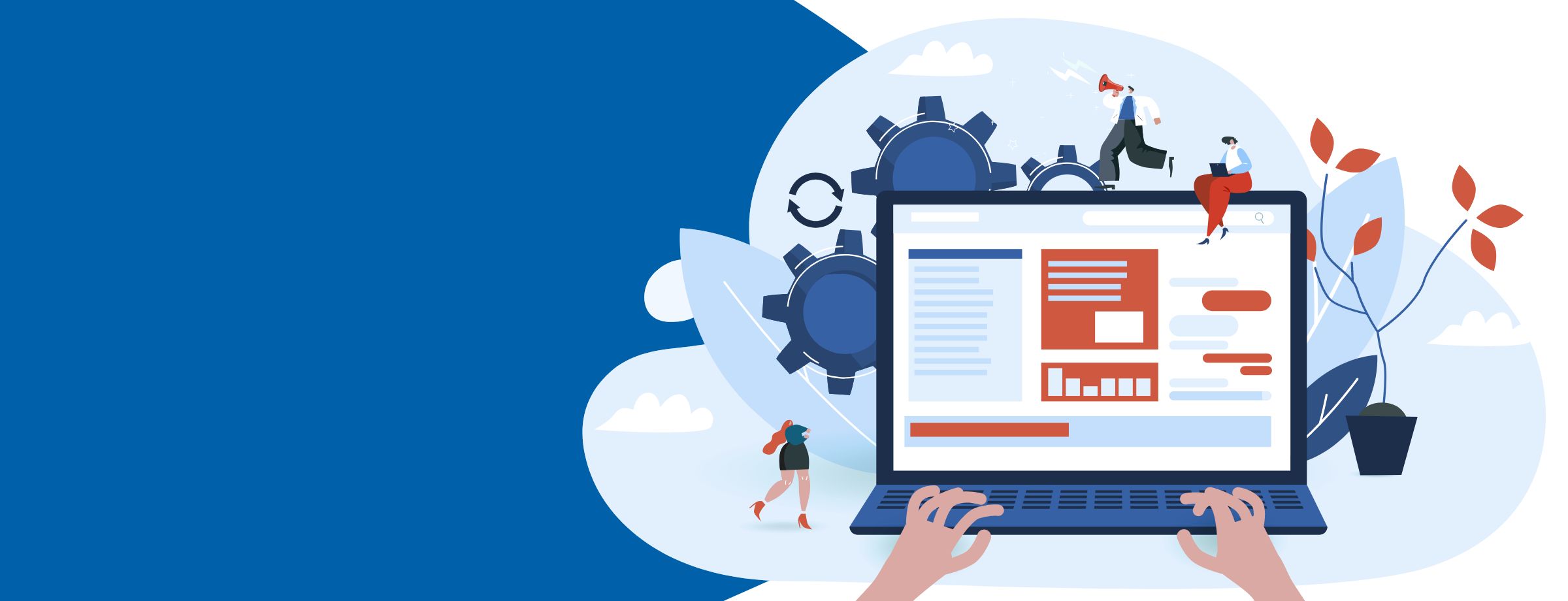Managed service providers (MSPs) recognize the value of retaining clients instead of only pursuing first-time buyers. After all, it’s more cost-effective for a company to maintain an existing customer base rather than acquiring more clients.
Consider this: around three-quarters (74.6%) of B2B sales cycles for new customers take four months or more to close, and almost half take seven months or more. In contrast, 60% of sales cycles for repeating customers close within three months, and 22% take less than a month. These statistics highlight how necessary and profitable it is for businesses to cater to existing clients.
The customer lifetime value (CLV) is a measure of this profitability over time. The CLV of a client represents the total monetary amount a customer spends (or is expected to spend) on your services or products throughout their life.

How to increase customer lifetime value
Software-as-a-Service (SaaS) businesses often find that they break even on a client after 16 to 18 months of acquiring them. The effort, time, and money it takes to acquire a new customer are undoubtedly much more than those involved in maintaining an existing customer. It can take up to five times as much to acquire new clients than nurture current ones.
The customer lifetime value is mathematically defined as the revenue a company obtains from a customer minus the cost it took to acquire them. For new and growing companies, it’s crucial to increase the CLV of customers to maximize profitability.
How do we acquire customers and increase their lifetime value while staying above the progressively tough competition in today’s markets?
It begins with making your existing customers a focus of your business. The top 10% of your clients spend up to three times on your products and services as your average customer. The top 1% spend up to five times as much.
This makes it essential to ensure the happiness and satisfaction of your current top clients. They must recognize your value as the ideal service provider, so they always bring their business back to you. This consistency and trustworthiness is a two-way street that enables you to grow your business through predictable revenue.
Use the 80/20 rule to your advantage
According to the Pareto Principle or 80/20 rule, 20% of your client base provides 80% of total revenue. You can use this principle to increase customer lifetime value as follows:
Find the products and services your top clients want
Analyze which of your services your top customers favor and whether you can modify them for a more extensive range of offerings. This way, you’ll increase customer lifetime value by providing lower-paying clients the resources they need while improving your chances of retaining them.
Apply the 80/20 rule to acquisition strategies
Once you know the services your top customers consume, you can create a profile based on them. These buyer personas will help you understand what similar clients want from their cloud-based SaaS provider.
When you’re creating an ideal customer profile, you must find the answers to the following questions:
-
- What do your top customers have in common?
- Where are the ideal customers likely to be located?
- What kind of messaging do they respond to?
- Which services are they likely to need?
Targeting ideal customers by offering them the services your top clients consume will help you acquire more high-paying clients who are likely to repeat their purchases. Basing your acquisition strategy on your top-paying customers also enables you to narrow your focus to targeted channels and means of marketing, thereby eliminating the unnecessary costs associated with procuring new clients.
Understand the buyer journey
MSPs have to target potential clients by providing them with relevant information at each stage of the sales funnel. The sales funnel represents the buyer’s journey—the processes of awareness, consideration and decision that prospective customers go through to become paying clients for your services.

If you target customers with technical information and dedicated marketing at the initial stages of their journey when they’re just window shopping, you’ll likely scare them off. You need to create trustworthy content for each step. Understanding the buyer’s journey will allow you to meet customers at each stage of the sales funnel with targeted marketing and increase your client acquisition rate.
Awareness
The awareness stage represents the top of the sales funnel. During this stage, the buyer may not recognize your company or the services you provide. They’ll be looking for solutions to their problems online—usually through search engines.
This is where you come in. Optimizing your website for search engines and using relevant keywords in your content will attract potential customers. Tools such as SEMrush and Google Trends help you find the likeliest keywords to guide organic traffic towards your content.
At this point, your content should be easy to understand and provide potential customers with new, relevant information. You don’t want to push your product or company onto the client at this point—you just want to create trust, so they consider you. Your content should include infographics and easy-to-read blogs with calls-to-action (CTAs) leading to more detailed white papers and guides that require potential clients to fill their details in a form before downloading. You can later use their email address during the consideration stage to send them relevant information.
Consideration
At this point, your leads are weighing different MSPs and considering which will add the most value to their business. You need to provide potential clients with more in-depth content and ensure that they know about the services you offer. Again, it’s imperative that you don’t push too hard—but mention your solutions and your expertise as an MSP.
High-conversion content at this stage includes technical resources such as webinars, white papers, FAQs, templates and case studies. Using a landing page and a form for each piece of educational content that potential clients access enables you to track their progress through the sales funnel.
Since you have these leads’ email addresses, you can target them through email marketing campaigns. Organic social media marketing and paid ads also enable you to widen your audience.
Decision
At this stage, your buyer’s intention matches your business’s services. You’ll find fewer leads reaching this stage, so you can focus on them and turn them into paying clients.
The decision stage requires you to present clients with user reviews, success stories, and case studies that are free to access. The CTAs you include in your landing pages and content at this stage should incorporate requests for demos and meetings.
If the lead decides to reach out for a meeting or product demo, you need to be prepared with more than just a sales pitch. You’ll need to present detailed video demos, talk about your brand, the solutions you offer, and the qualities that help you stand out from other MSPs.
Understanding the buyer’s journey enables you to map out solutions for each phase. You can reach out to new leads and see which content receives positive responses from your buyers to fill out any gaps in your strategy.
Create post-nurture programs
Once a customer has gone through the buyer journey and landed on your service, how do you retain them? The loyalty loop in the buyer journey can enable clients to stay committed to your company.
Now that you’ve helped the client solve a problem, you’re in a better position to understand what they expect from you. Tailoring your solutions to their needs enables you to expand the services and build predictable revenue.
Once you see that a client is committed to your solutions, you can take advantage of their advocacy. Ask loyal clients to refer you to other companies in their niche that they collaborate with.
You can also offer top-paying or long-standing clients loyalty rewards to incentivize future purchases. You’ll increase predictable revenue by building a community of high-paying clients. Your loyalty program can be paid or point-based.
Increase your profitability post-pandemic
MSPs need to know customer lifetime value because it enables them to determine what portion of their budget they should allocate to retain existing clients and acquire new ones. It’s a critical factor that investors use to measure your business’s profitability.
If you’re looking for expert guidance on additional ways to increase your business’s profitability, Sherweb can help. Our MBA for MSPs program offers an understanding of how new and existing clients play a role in maximizing your business’s revenue. You can also join our partner program to take advantage of even more expert services.





